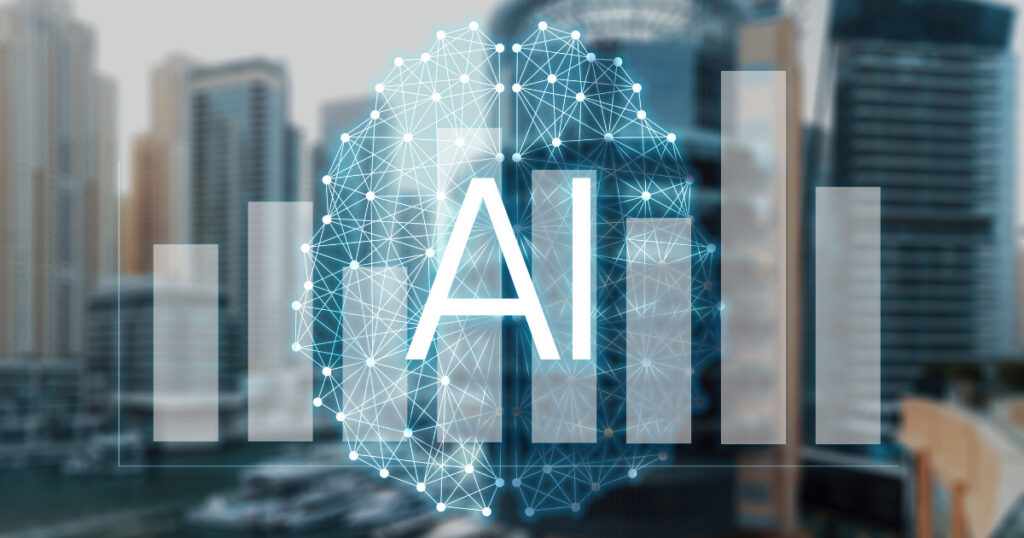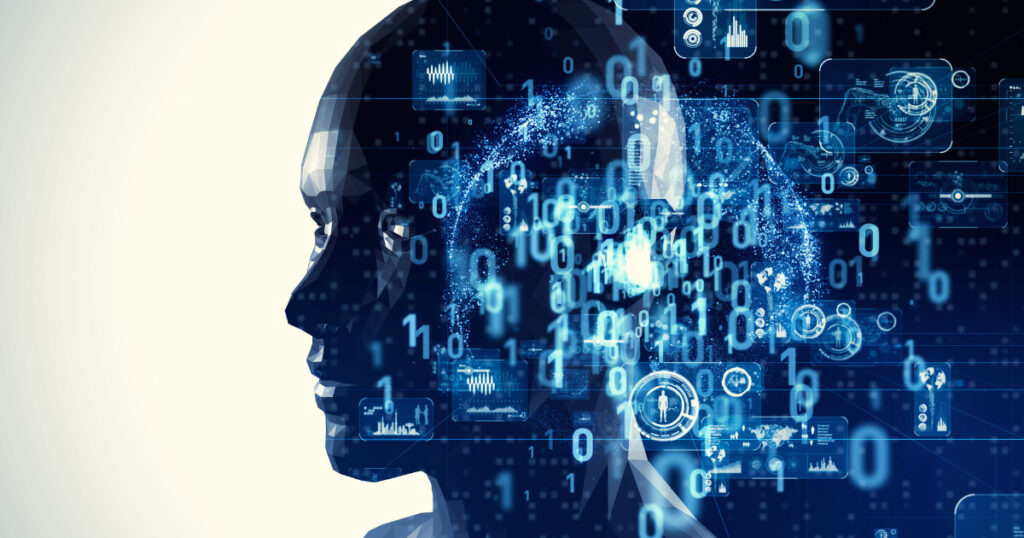Artificial intelligence (AI) is transforming the landscape of content creation, offering both exciting opportunities and significant challenges. As technology advances, AI’s capabilities have expanded beyond automation, enabling it to create, curate, and optimize content at unprecedented speeds. But with these advancements come concerns: Will AI replace human creativity, or will it serve as a powerful tool to enhance it? In this article, we will explore the impact of AI on content creation, weighing the pros and cons, and determining whether AI is a boon or bane for the future of creative industries.
The Rise of AI in Content Creation
AI is no longer a futuristic concept—it’s already shaping industries worldwide. In content creation, AI tools like OpenAI’s GPT-3 (and now GPT-4), Google’s BERT, and AI-powered platforms such as Jarvis and Copy.ai are transforming how brands, marketers, and writers approach content production.
AI Capabilities in Content Creation
- Automated Content Generation: AI can generate written content in seconds, from blog posts and product descriptions to social media captions and reports. With the ability to process and analyze vast amounts of data, AI tools create coherent, fact-based articles that can be customized based on the user’s needs.
- Natural Language Processing (NLP): Advances in NLP enable AI to understand, interpret, and produce human language in a way that feels natural. This technology allows AI to mimic the tone, style, and structure of human-written content.
- Content Optimization: AI tools can analyze existing content and suggest improvements, such as keyword optimization for SEO, readability enhancements, and engagement-boosting elements. This helps marketers and businesses tailor their content to specific audiences and increase its visibility.
- Visual and Multimedia Content: AI also plays a role in creating visual content. AI-generated art, video editing, and even automated video creation platforms are changing how content is developed and consumed across multimedia platforms.
- Personalization: AI can create personalized content at scale by analyzing user behavior, preferences, and interactions. From personalized emails to tailored social media posts, AI allows businesses to engage audiences more effectively by delivering relevant content.

The Boon: Advantages of AI in Content Creation
AI in content creation offers several benefits that can streamline workflows, enhance productivity, and improve overall content quality. Here are some of the key advantages:
1. Increased Efficiency and Speed
One of the most significant advantages of AI in content creation is the ability to produce large volumes of content quickly. Traditional content creation can be time-consuming, requiring research, drafting, editing, and optimization. AI-powered tools, however, can generate articles, product descriptions, and social media posts in a fraction of the time.
For businesses that need to create content at scale—such as e-commerce platforms, news outlets, and digital marketing agencies—AI offers a solution that allows for rapid content production without sacrificing quality.
2. Cost-Effectiveness
Hiring writers, editors, and content creators can be expensive, especially for smaller businesses or startups. AI tools, on the other hand, can produce content at a lower cost. While AI solutions may require upfront investment in technology, they often save costs in the long run by reducing the need for human labor and allowing for continuous content generation.
3. Data-Driven Insights
AI has the power to analyze vast amounts of data, providing content creators with insights that would be difficult or time-consuming to gather manually. AI can identify trends, keywords, and topics that are resonating with audiences, enabling content creators to develop more targeted and relevant content.
For example, AI-powered SEO tools can analyze competitor websites, identify keyword gaps, and suggest content topics that have the potential to drive traffic. This data-driven approach enhances content strategy and ensures that content aligns with audience interests.
4. Improved Personalization
Consumers today expect personalized experiences, and AI allows businesses to meet those expectations. By analyzing user behavior and preferences, AI can create content that speaks directly to individual needs. Personalized email marketing campaigns, product recommendations, and tailored blog posts are all possible through AI-driven content generation.
For instance, e-commerce websites use AI to recommend products based on a user’s browsing history, while content platforms curate articles based on a reader’s past interactions. This level of personalization improves engagement, increases conversions, and enhances the overall user experience.
5. Enhanced Creativity and Innovation
While some fear that AI could stifle creativity, others argue that it can enhance it. AI can assist content creators by offering new ideas, suggesting creative directions, or even generating the foundation for a piece that writers can then refine. By automating repetitive tasks, AI frees up human creators to focus on more complex and innovative aspects of content production.
For example, AI tools can help marketers come up with unique headlines, identify trending topics, or even generate creative prompts. This collaboration between human creativity and AI-generated suggestions can lead to more dynamic and engaging content.

The Bane: Concerns and Challenges of AI in Content Creation
Despite the many advantages, there are also several concerns associated with AI in content creation. These challenges raise questions about the ethical, creative, and practical implications of relying on AI.
1. Lack of Authenticity and Human Touch
One of the most significant criticisms of AI-generated content is the lack of authenticity and human emotion. While AI can mimic language and structure, it cannot replicate the nuances of human experience, emotion, and cultural context. Readers often connect with content on a personal level, and AI-generated content may lack the emotional depth and relatability that human writers provide.
For example, storytelling, a critical aspect of content marketing, relies on personal experiences, emotions, and unique perspectives. AI-generated stories may feel formulaic or detached, making it difficult to forge a genuine connection with the audience.
2. Risk of Plagiarism and Repetitiveness
AI models rely on vast datasets of existing content to generate new material. As a result, there is a risk that AI-generated content may inadvertently plagiarize existing work or produce repetitive, unoriginal content. This can be a concern for businesses that prioritize originality and uniqueness in their brand messaging.
Moreover, AI may struggle to generate truly fresh ideas, as it primarily pulls from patterns found in previously published material. This raises questions about the long-term sustainability of AI-generated content in a world where originality is highly valued.
3. Ethical and Legal Implications
AI in content creation raises several ethical and legal concerns. As AI-generated content becomes more widespread, questions arise about intellectual property rights, authorship, and accountability. Who owns the rights to AI-generated content, and who is responsible if the content contains misinformation or violates copyright laws?
Additionally, the widespread use of AI in content creation may lead to job displacement for writers, editors, and content creators. As AI tools become more sophisticated, there is a fear that human creators will be replaced by machines, leading to job loss in creative industries.
4. Over-Reliance on Automation
While AI can streamline content creation, there is a risk of over-reliance on automation. Businesses that rely too heavily on AI-generated content may sacrifice quality, creativity, and engagement for the sake of efficiency. AI should be seen as a tool that complements human creativity, not a replacement for it.
Over-reliance on AI can also lead to a lack of diversity in content. Since AI generates content based on patterns found in existing data, it may reinforce existing biases or fail to represent diverse perspectives. This can be a concern for brands that aim to create inclusive and culturally sensitive content.
5. Limited Contextual Understanding
AI’s understanding of context is still limited. While AI can process large amounts of data and generate content based on patterns, it may struggle to understand the nuances of specific industries, cultures, or audiences. This can result in content that feels generic or irrelevant to certain audiences.
For example, AI may generate content that includes outdated information, irrelevant references, or incorrect cultural assumptions. Human oversight is essential to ensure that AI-generated content aligns with the specific needs and context of the target audience.

Striking a Balance: How to Use AI Effectively in Content Creation
To fully harness the power of AI in content creation, businesses and content creators need to strike a balance between automation and human input. Here are some strategies to maximize the benefits of AI while mitigating its challenges:
1. Use AI for Repetitive Tasks
AI excels at automating repetitive tasks such as content curation, keyword optimization, and data analysis. By delegating these tasks to AI, content creators can focus on more complex, creative aspects of content development. This allows for increased efficiency without sacrificing creativity.
2. Human Oversight and Editing
While AI can generate content quickly, human oversight is essential to ensure quality and relevance. Editors and writers should review AI-generated content to add a personal touch, correct any errors, and ensure that the content aligns with the brand’s voice and messaging.
3. Combine AI with Human Creativity
AI should be seen as a tool that enhances, rather than replaces, human creativity. Content creators can use AI to generate ideas, outline articles, or suggest improvements, but the final product should always involve human input. This collaboration between AI and human creativity leads to more dynamic and engaging content.
4. Ethical Considerations
Businesses should consider the ethical implications of using AI in content creation. This includes ensuring that AI-generated content is original, free from plagiarism, and inclusive of diverse perspectives. Additionally, businesses should be transparent about the use of AI in their content strategy and consider the potential impact on job displacement in creative industries.
Conclusion: Boon or Bane?
AI in content creation is both a boon and a bane, depending on how it is used. On one hand, AI offers significant advantages in terms of efficiency, cost-effectiveness, and data-driven insights. It enables businesses to create personalized, high-quality content at scale, making it a valuable tool in today
’s digital landscape.
On the other hand, AI-generated content comes with challenges, including a lack of authenticity, ethical concerns, and the risk of over-reliance on automation. While AI can automate certain aspects of content creation, it cannot replace the human touch, creativity, and emotional depth that resonate with audiences.
Ultimately, AI should be viewed as a powerful tool that complements human creativity. By using AI strategically and maintaining human oversight, businesses can harness the benefits of AI while preserving the authenticity and originality that make content truly impactful.
